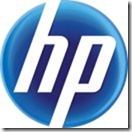Secure Backup to AT&T Synaptic Storage
Gladinet recognizes that one of the major concerns of cloud storage users is security. There are certainly many benefits to backing up your data to Synaptic Storage, but how can users be sure that hackers, service provider employees or anyone else can’t look at their files after they’re backed up online? Until now, that was a nagging question with no good answer.
With the introduction of AES 256-bit encryption for files backed up to Synaptic Storage, Gladinet Cloud Desktop 2.0 is tackling that concern head-on: The system simply encrypts users’ files on the storage client before saving them on the servers in their encrypted form.
Cloud Desktop 2.0 allows Synaptic Storage to be mapped as a network drive. To backup securely to Synaptic Storage, we have to first select a folder for encryption in the Virtual Directory Manager of the Gladinet Management Console:

After clicking on the icon to add a new encrypted folder, select the Synaptic Storage folder that will be your backup target. Here, I have selected the root folder:

Since this is the first encrypted folder that I am adding, I’m prompted for a password which will be used to generate a private encryption key.


Now everything that is uploaded to Synaptic Storage will be encrypted. We can now select this root folder, or any sub folder as a backup target in the backup wizard.
For example, if you want to backup all documents to Synaptic Storage, first select the “Backup My Documents” option from the systray menu:

The following steps for the backup wizard are pretty straightforward and self explanatory.

Just make sure to select the encrypted folder as your backup target:

And all backups to Synaptic Storage will be protected by AES 128-bit encryption.
For more information about Gladinet products and features, please visit http://www.gladinet.com/
With the introduction of AES 256-bit encryption for files backed up to Synaptic Storage, Gladinet Cloud Desktop 2.0 is tackling that concern head-on: The system simply encrypts users’ files on the storage client before saving them on the servers in their encrypted form.
Cloud Desktop 2.0 allows Synaptic Storage to be mapped as a network drive. To backup securely to Synaptic Storage, we have to first select a folder for encryption in the Virtual Directory Manager of the Gladinet Management Console:

After clicking on the icon to add a new encrypted folder, select the Synaptic Storage folder that will be your backup target. Here, I have selected the root folder:

Since this is the first encrypted folder that I am adding, I’m prompted for a password which will be used to generate a private encryption key.


Now everything that is uploaded to Synaptic Storage will be encrypted. We can now select this root folder, or any sub folder as a backup target in the backup wizard.
For example, if you want to backup all documents to Synaptic Storage, first select the “Backup My Documents” option from the systray menu:

The following steps for the backup wizard are pretty straightforward and self explanatory.

Just make sure to select the encrypted folder as your backup target:

And all backups to Synaptic Storage will be protected by AES 128-bit encryption.
For more information about Gladinet products and features, please visit http://www.gladinet.com/



Comments